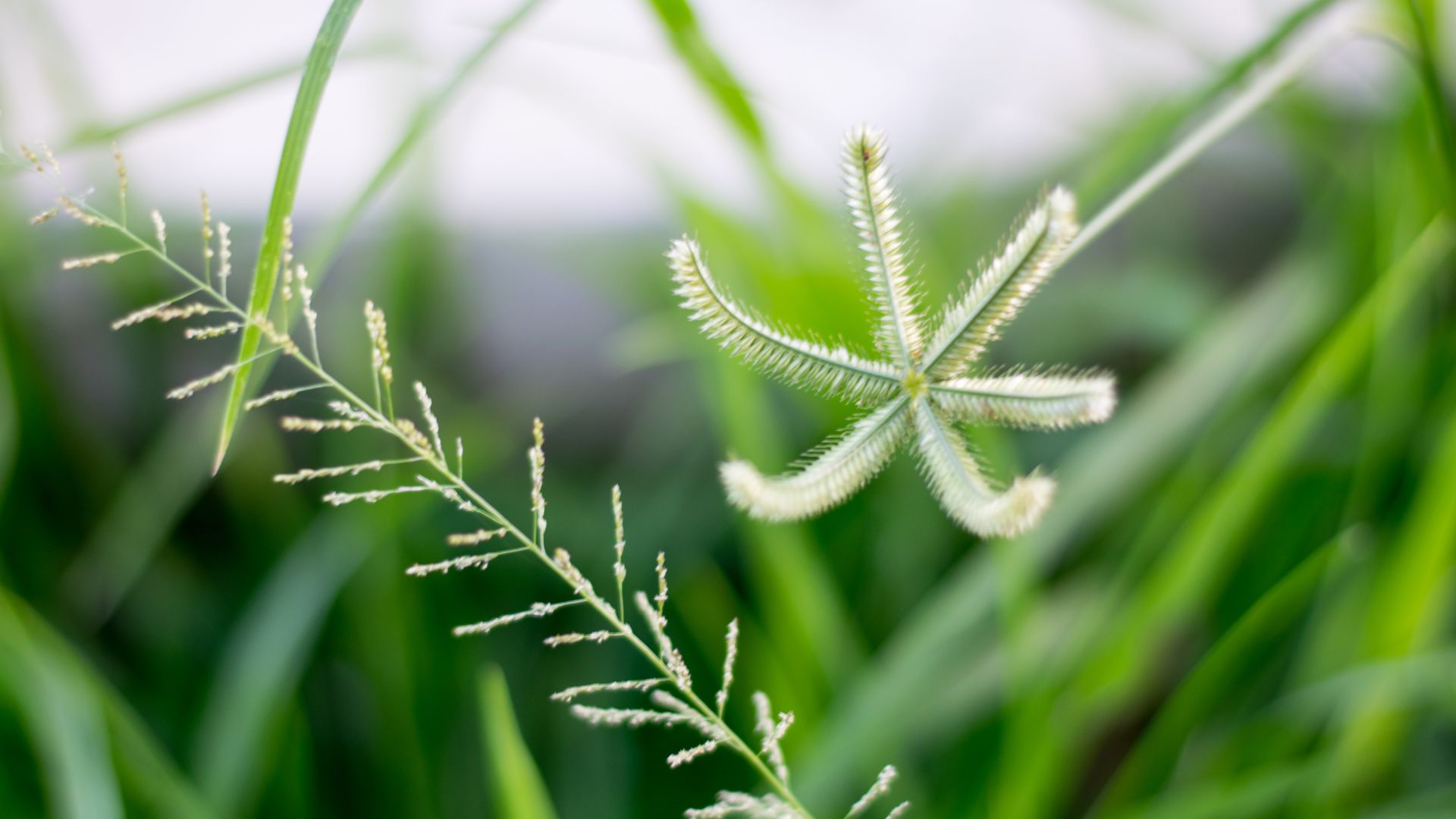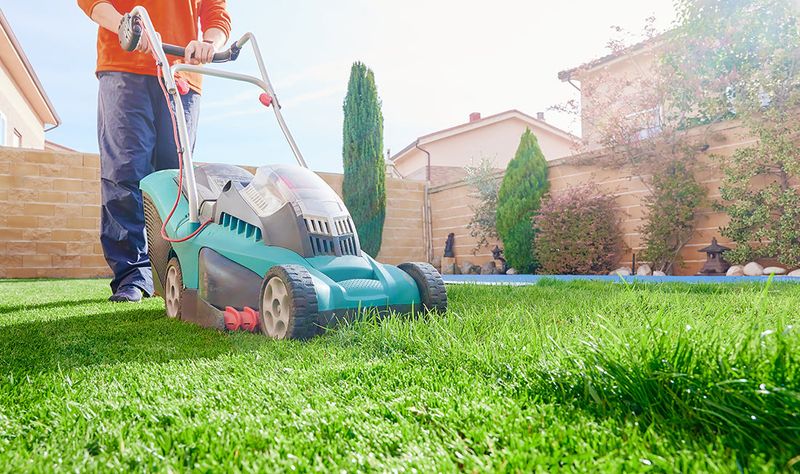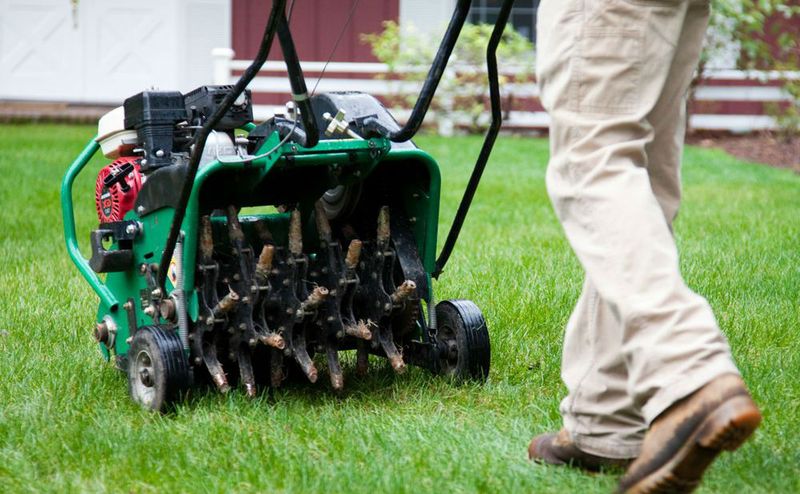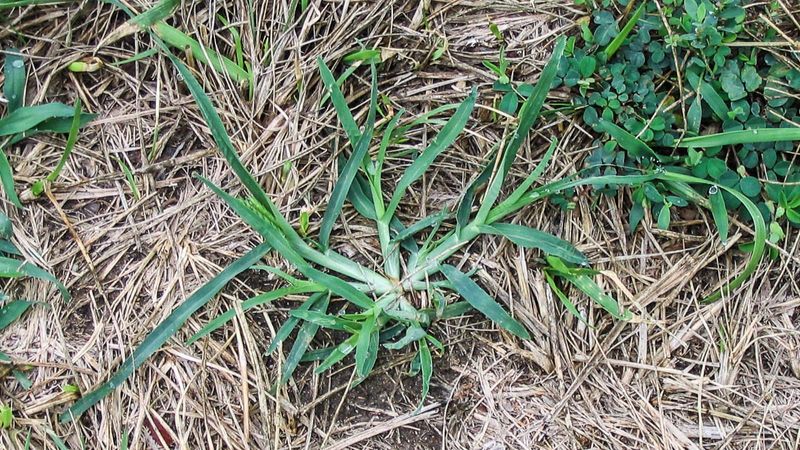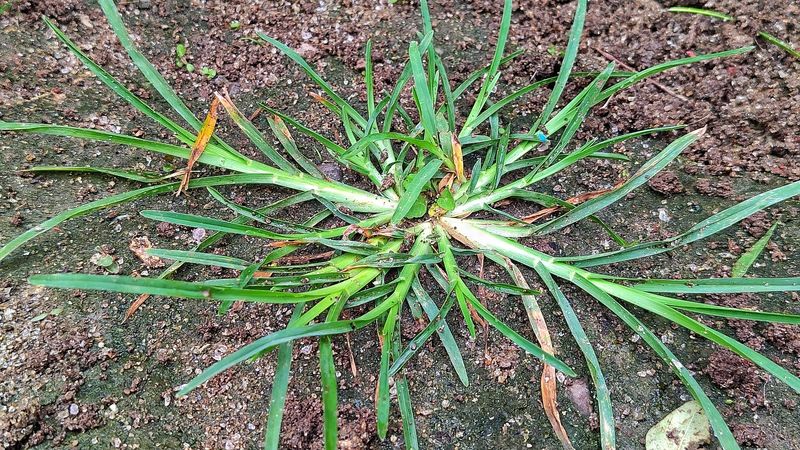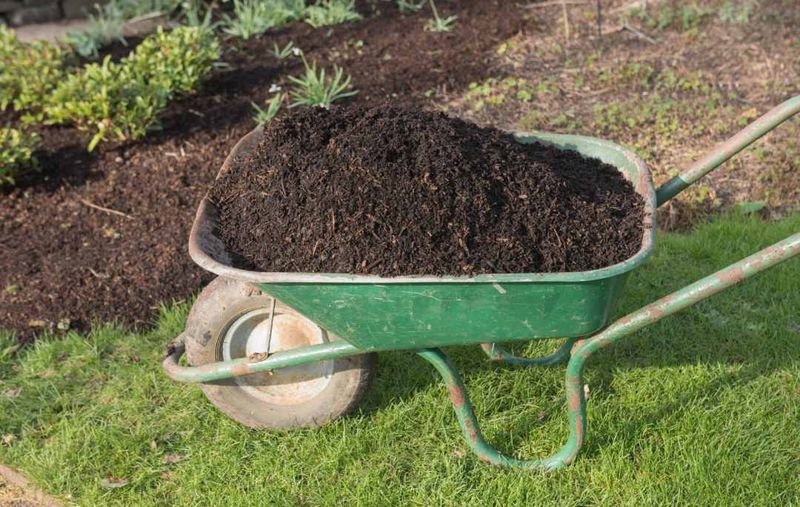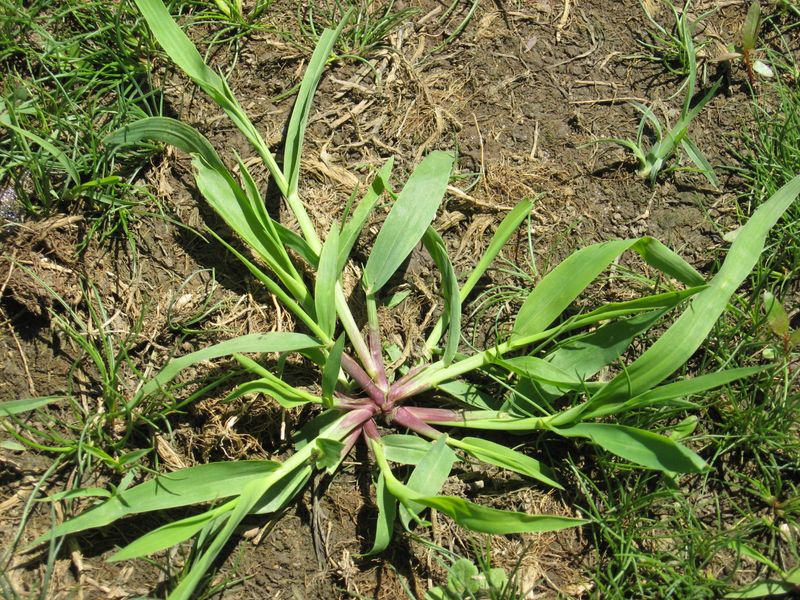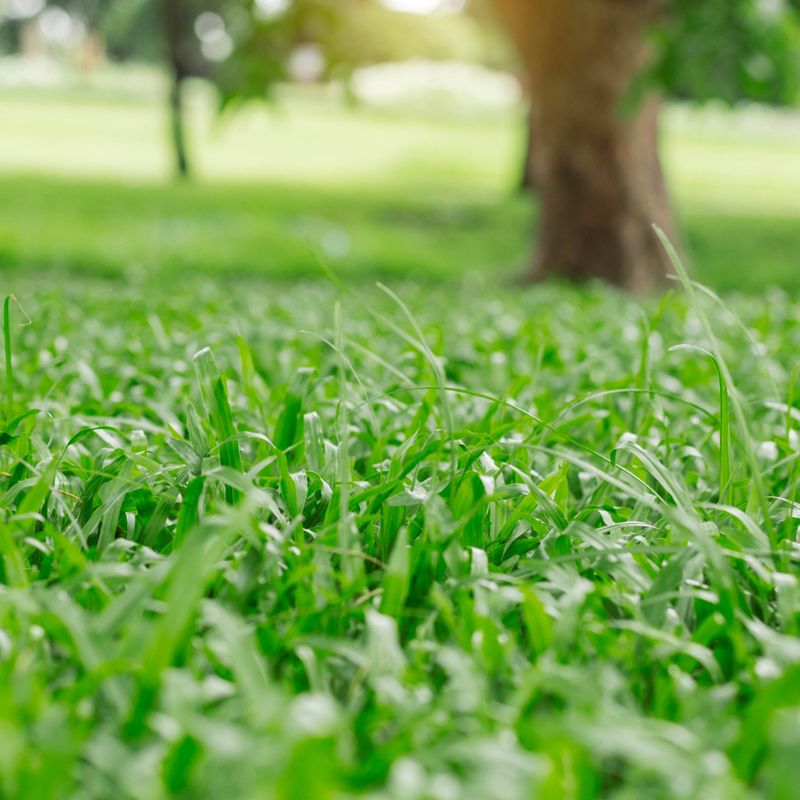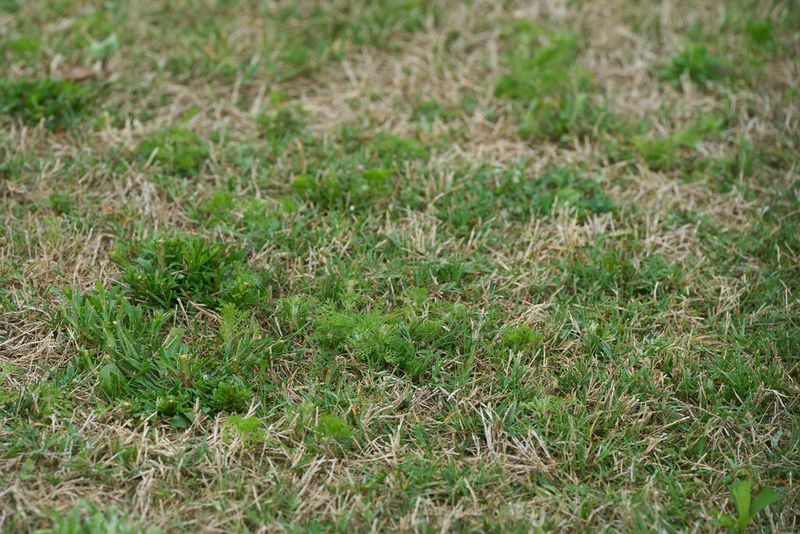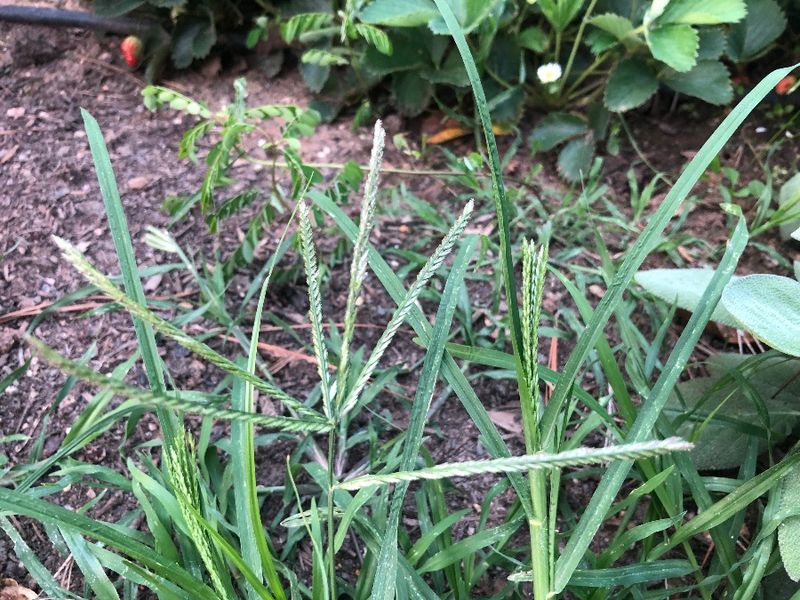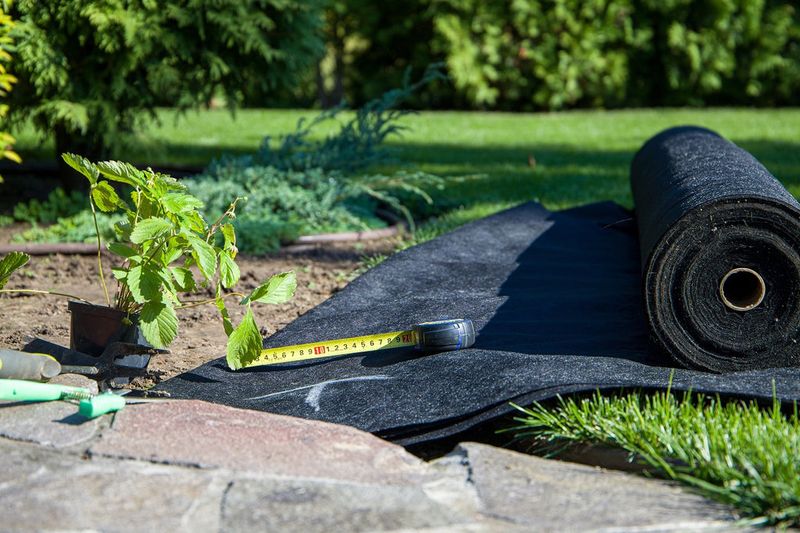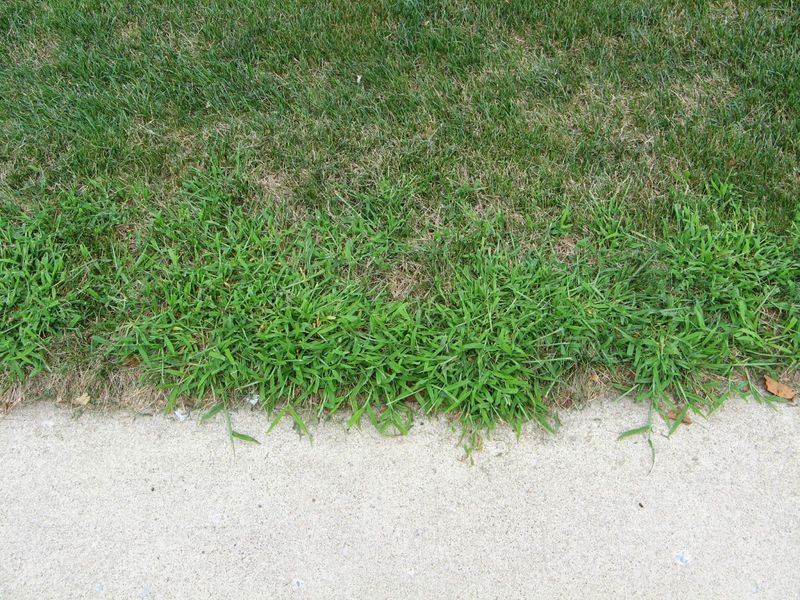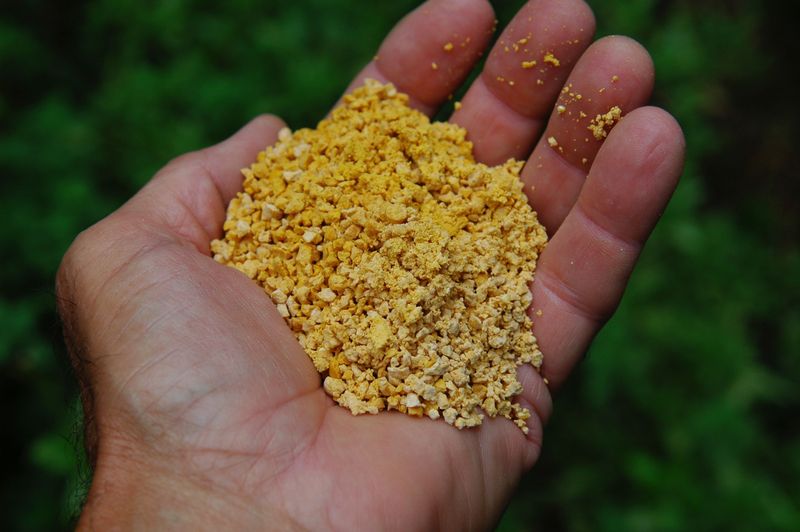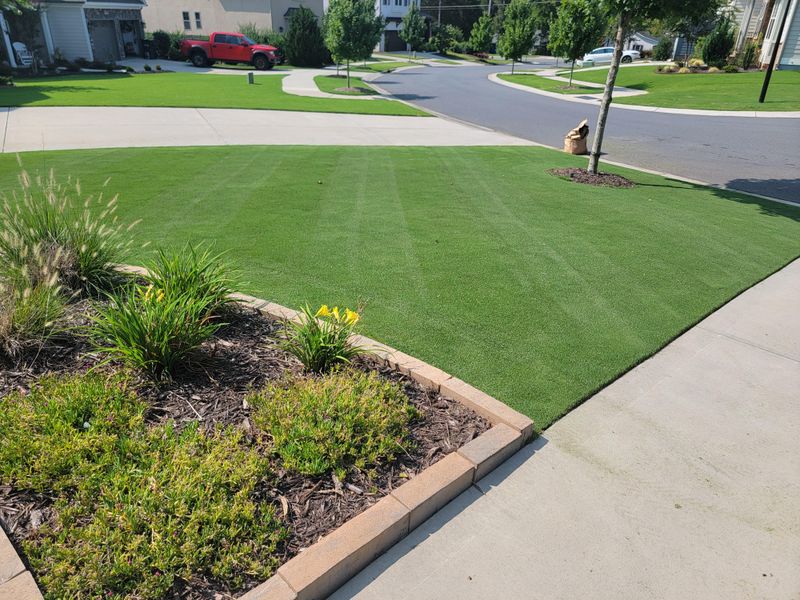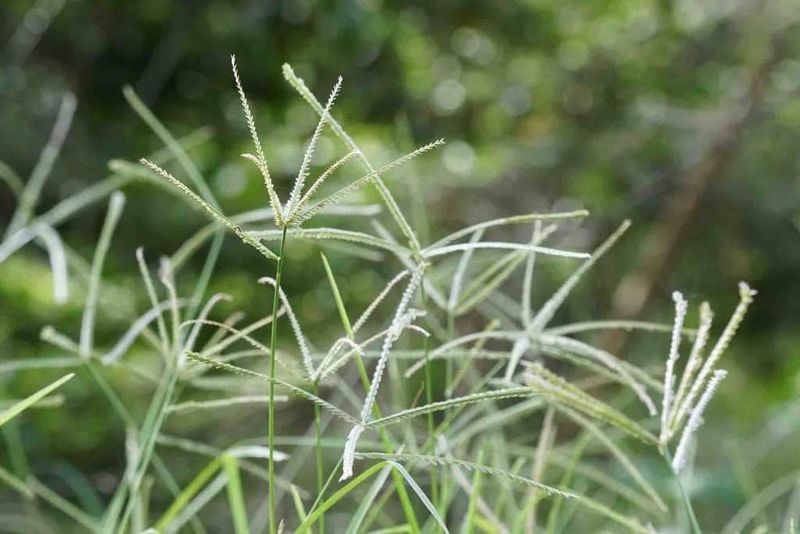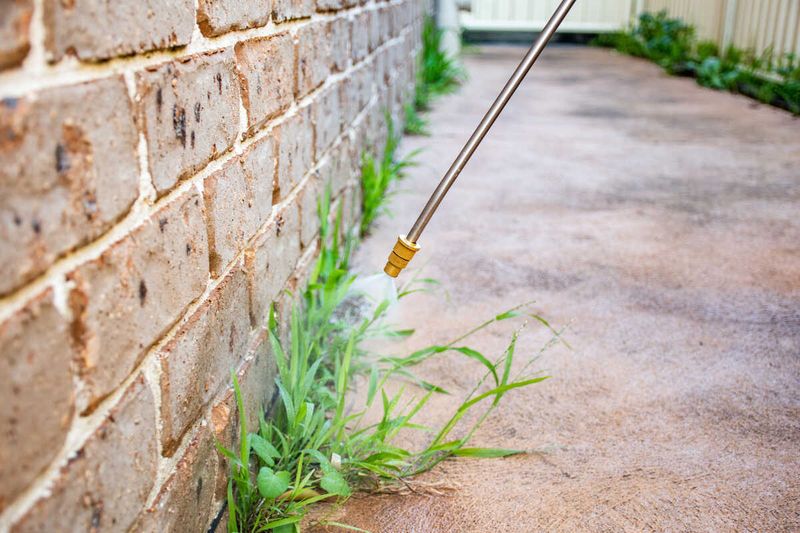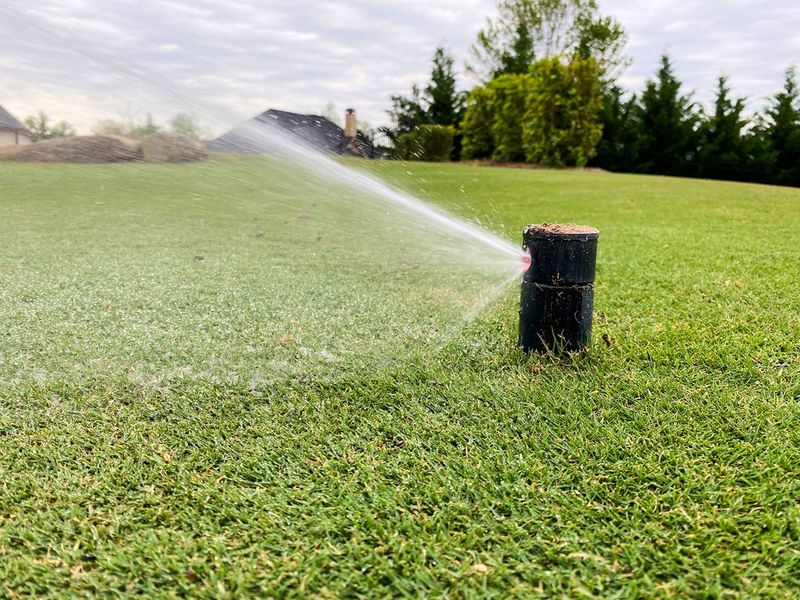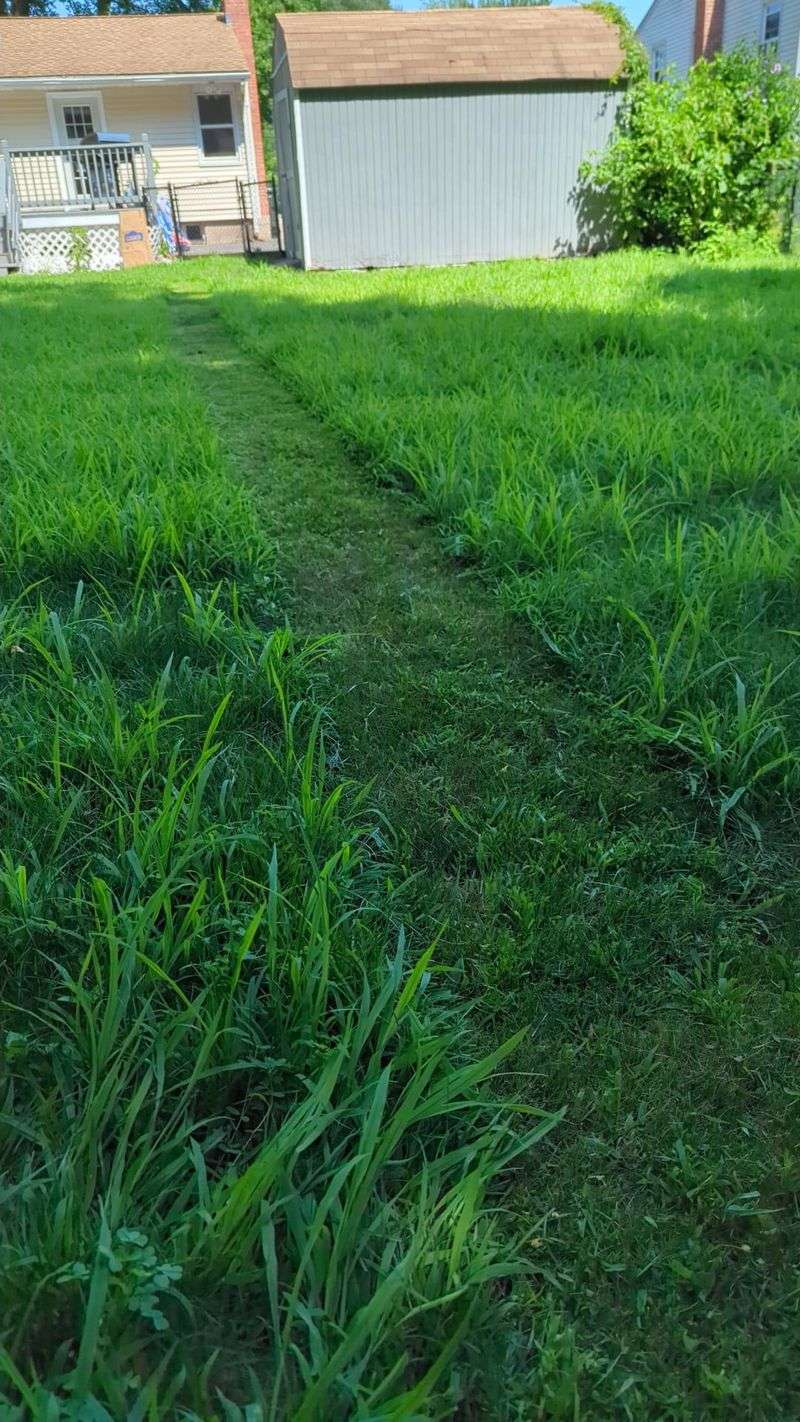Goosegrass is one of those stubborn lawn invaders that can quickly transform your pristine yard into a patchy mess. The flat, star-shaped weed thrives in compacted soil and high-traffic areas, making it particularly troublesome for homeowners who’ve worked hard on their lawns.
For me, battling goosegrass became personal after it snuck into my yard through a neighbor’s fence line. By the time I noticed the distinctive wheel-shaped pattern, it had already established several colonies.
Early identification makes all the difference with this tough weed. The light green seedlings have a whitish center that gives them their nickname “silver crabgrass” – spot this early and you’ll save yourself weeks of frustration later.
1. Maintain Proper Mowing Height
Keeping your grass at the right height creates natural defense against goosegrass. Taller grass (about 3-4 inches) shades the soil surface, preventing goosegrass seeds from getting the sunlight they need to germinate.
Many homeowners make the mistake of cutting their lawns too short, especially during summer heat. This actually creates the perfect conditions for goosegrass to thrive while weakening your desired grass.
Adjust your mower to the highest setting appropriate for your grass type. The taller blades will develop deeper roots, creating a healthier lawn that naturally resists weed invasion.
2. Aerate Compacted Soil
Goosegrass absolutely loves compacted soil. The weed thrives in areas where foot traffic, vehicles, or heavy equipment have pressed the earth down tight. My driveway edges were the first place I spotted these troublemakers taking hold.
Renting a core aerator from your local garden center makes quick work of this problem. The machine pulls small plugs of soil from your lawn, creating breathing room for grass roots while reducing the dense conditions goosegrass prefers.
Fall is typically the best time for aeration, but spring works too. Just avoid summer when heat stress might slow your lawn’s recovery.
3. Apply Pre-Emergent Herbicides
Timing is everything when using pre-emergent herbicides against goosegrass. Unlike crabgrass, which germinates early, goosegrass typically emerges when soil temperatures reach about 60-65°F for several consecutive days – usually 2-3 weeks after crabgrass.
Products containing dithiopyr, prodiamine, or pendimethalin create a barrier that prevents seeds from developing properly. I apply mine when my dogwood trees start blooming, which perfectly aligns with goosegrass germination in my region.
Water the product in with about ¼ inch of irrigation to activate the barrier. Remember, pre-emergents won’t kill existing weeds, only prevent new ones.
4. Hand-Pull Young Plants
Catching goosegrass early gives you the best chance at manual removal. The distinctive whitish center makes young plants easy to identify, even when they’re just starting out. Grab them low at the base and pull gently but firmly.
The roots of young goosegrass haven’t yet established their notorious grip, making them much easier to remove completely. After a good rain is the perfect time for this task – the softened soil releases the roots more willingly.
Always dispose of pulled plants in the trash rather than compost. Even immature goosegrass can potentially produce seeds that might survive composting temperatures.
5. Improve Soil Drainage
Standing water creates prime real estate for goosegrass invasion. The weed oddly thrives in both compacted soil and soggy conditions that stress regular grass. My backyard low spot became goosegrass central until I addressed the drainage.
Adding organic matter like compost to heavy clay soils improves both drainage and aeration. For serious problems, installing French drains or creating subtle swales redirects water away from problem areas.
Sometimes simply dethatching your lawn solves minor drainage issues by removing the layer of dead grass that prevents water from reaching the soil properly. Your grass will thank you with renewed vigor that helps crowd out weeds.
6. Use Organic Mulch Barriers
Strategic mulching prevents goosegrass from gaining a foothold in garden beds and borders. A 3-inch layer of organic mulch blocks sunlight from reaching weed seeds while retaining moisture for your desired plants.
Pine straw works particularly well around acid-loving plants, while hardwood mulch lasts longer in high-traffic areas. I learned the hard way not to use hay as mulch – it often contains weed seeds that create more problems than they solve.
Refresh your mulch annually before weed seeds germinate, typically in early spring. Pull any existing weeds first, then apply fresh mulch to maintain that critical 3-inch barrier.
7. Fertilize Appropriately
Balanced fertilization strengthens your lawn’s natural defenses against goosegrass invasion. Healthy grass grows thicker and competes more effectively for resources, making it harder for weeds to establish themselves.
Soil testing revealed my yard needed more potassium than I’d been applying. The adjustment made a noticeable difference in my grass’s vigor within weeks. Most local extension offices offer affordable soil tests that take the guesswork out of fertilizing.
Avoid excessive nitrogen, especially during summer months when cool-season grasses naturally slow down but goosegrass thrives. Instead, focus on building root strength with properly timed applications based on your specific grass type.
8. Water Deeply But Infrequently
Smart watering practices discourage goosegrass while promoting deeper grass roots. Frequent shallow watering creates ideal conditions for this weed to thrive, as its shallow root system can access the moisture while your grass struggles.
I switched to watering just twice weekly but for longer periods. This trains grass roots to grow deeper, accessing moisture unavailable to the shallow-rooted goosegrass. My lawn stayed greener during dry spells once I made this change.
Early morning watering (between 4-10 AM) maximizes absorption and minimizes disease pressure. Aim for about 1-1.5 inches of water weekly, including rainfall, measured using a simple rain gauge.
9. Overseed Thin Areas
Bare spots in your lawn practically invite goosegrass to move in and make itself comfortable. Overseeding fills these gaps with desirable grass before weeds can establish themselves. The technique transformed my patchy backyard into a carpet of green.
Fall offers ideal conditions for cool-season grasses like fescue and Kentucky bluegrass, while late spring works better for warm-season varieties. Choose grass seed that matches your existing lawn or is appropriate for your specific growing conditions.
Prepare the area by raking gently to expose soil, spread seed evenly, then cover lightly with compost. Keep the area consistently moist until germination occurs.
10. Apply Post-Emergent Herbicides Carefully
When goosegrass has already emerged, selective post-emergent herbicides become your targeted solution. Products containing fenoxaprop, quinclorac, or sulfentrazone specifically target grassy weeds while sparing most lawn grasses.
Application timing matters tremendously. Mature goosegrass proves stubborn against herbicides, so target plants when they’re young and actively growing. I made the mistake of waiting too long last year and needed multiple applications.
Always follow label directions precisely regarding rates, timing, and temperature restrictions. Many herbicides lose effectiveness above 85°F or can damage desired grasses when applied during heat stress.
11. Install Landscape Fabric Under Mulch
Professional-grade landscape fabric creates a physical barrier against goosegrass in ornamental beds. Unlike plastic, quality fabric allows water and nutrients to pass through while blocking light that weed seeds need to germinate.
My experience taught me that cheaper fabrics deteriorate quickly, allowing weeds to penetrate within a season or two. Investing in commercial-grade material rated for 15+ years saves frustration and replacement costs.
Cut X-shaped slits for planting rather than round holes. This allows for plant growth while minimizing exposed fabric edges where weeds can gain a foothold. Always overlap seams by at least 6 inches and secure with landscape pins.
12. Reduce Soil Compaction In High-Traffic Areas
Pathways and play areas often become goosegrass hotspots due to soil compaction. Creating designated walkways with stepping stones, gravel, or pavers redirects foot traffic and protects your lawn from the compression that goosegrass loves.
For children’s play areas, consider installing rubber mulch or wood chips that absorb impact while preventing the soil compression that weakens grass and encourages weeds. My son’s swing set area transformed from a goosegrass patch to weed-free once I added proper ground cover.
Regularly rotating play equipment locations prevents any single area from becoming permanently compacted and vulnerable to weed invasion.
13. Use Corn Gluten Meal As Natural Pre-Emergent
Corn gluten meal offers an organic alternative to synthetic pre-emergent herbicides. This natural byproduct of corn processing prevents weed seeds from forming roots when they germinate, effectively stopping goosegrass before it establishes.
Application requires precise timing—about 2-3 weeks before expected goosegrass germination in your area. I track soil temperatures and apply when they consistently reach 55-60°F at a 2-inch depth.
Apply at a rate of 20 pounds per 1,000 square feet for effective control. The bonus? Corn gluten contains about 10% nitrogen, so it feeds your lawn while preventing weeds. Just don’t apply it when seeding, as it prevents all seeds from rooting.
14. Create Barriers Along Property Edges
Goosegrass often invades from neighboring properties or untended areas. Creating physical barriers along fence lines or property boundaries significantly reduces this migration. A simple 6-inch deep trench filled with gravel or mulch creates an effective weed break.
Edging materials like metal, plastic, or stone installed 2-3 inches deep also block creeping roots and prevent lawn grass from spreading into beds where it might be difficult to maintain. The clean lines have the added benefit of enhancing your landscape’s appearance.
Check these barriers seasonally for breaches or areas where soil might have washed over them, reducing their effectiveness as weed preventers.
15. Remove Seed Heads Before They Mature
A single goosegrass plant produces thousands of seeds that remain viable in soil for years. When complete removal isn’t possible, at least cut off the seed heads before they mature and spread.
The distinctive finger-like seed heads become visible as the plant matures. They start green but turn brown as seeds ripen. Removing them while still green prevents the next generation from establishing.
Garden shears work well for selective seed head removal when you can’t pull entire plants. Dispose of the cuttings in the trash rather than compost, as immature seeds might still ripen after cutting.
16. Treat With Boiling Water Or Vinegar Solution
Natural spot treatments offer chemical-free options for isolated goosegrass plants. Boiling water poured directly on the weed center effectively kills it without leaving residual chemicals in your soil. The heat destroys cell structure immediately.
White vinegar mixed with a tablespoon of dish soap makes another effective natural herbicide. The acetic acid breaks down plant tissue while the soap helps it stick to leaves. My driveway cracks stayed weed-free all season after this treatment.
Remember these methods kill any plant they contact, so use them carefully around desired vegetation. They work best on hard surfaces like patios, walkways, and driveway edges.
17. Monitor Irrigation Systems Regularly
Faulty sprinkler heads often create perfect goosegrass habitats. Leaking valves or misaligned sprayers create constantly wet areas where this moisture-loving weed thrives while regular grass struggles.
Performing a monthly irrigation audit during growing season helps identify problems early. Run each zone for a few minutes while checking for proper coverage, leaks, or pooling water. My front yard’s persistent goosegrass patch disappeared after I fixed a cracked sprinkler head.
Consider upgrading to smart controllers that adjust watering based on weather conditions. They prevent overwatering during rainy periods, which reduces favorable conditions for goosegrass establishment.
18. Maintain Consistent Lawn Care Schedule
Consistency becomes your greatest ally in preventing goosegrass establishment. Creating and following a year-round lawn care calendar ensures you’re taking proactive steps rather than reacting to weed invasions.
Spring tasks include pre-emergent application and soil testing. Summer focuses on proper mowing and watering. Fall brings aeration and overseeding opportunities. Even winter months require attention to prevent compaction from frozen soil.
Setting calendar reminders for these seasonal tasks transformed my approach to lawn care. The organized system catches potential problems before weeds gain a foothold, making maintenance simpler and more effective than emergency treatments.

